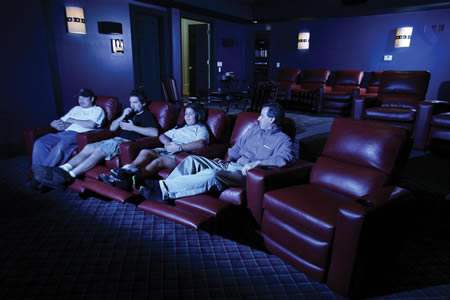July 2006
So many new technologies for the home have been appearing lately that it is a challenge to separate the hype from the reality, or the fads from the lasting trends. It's also difficult to keep up with the acronyms, abbreviations and amazing new descriptive names being thrown about. Hopefully, the following will help to clear up the confusion.

Some intriguing digital ideas coming into vogue, just to name a few, are blogs (web logs), MP3 (digital audio files), iPods (music and video players), podcasts (digital audio/video content that is broadcast over the Internet); and wikis (encyclopedia-like reference articles continually updated online by experts in specialized fields; derived from Wikipedia, one of the leading advocates of this idea). There's also VOIP (Voice Over Internet Protocol, which allows telephone service to travel over the Internet).
Some late adopters may be grumbling, "Just when I learned to program my VCR, things sure became complicated."
According to John Cowie, manager of communications wiring for the Copper Development Association, homeowners need to distinguish between mumbo jumbo and the truly important new technology. He says it is especially worth taking notice of the following broad trends.
Your Home Is Your LAN
You've heard the sayings "No man is an island" and "Your home is your castle." Well, the latest twist is "Your home is your LAN." A LAN is a local area network, typically connected to the wide area networks of service providers, via cable, fiber optics, or DSL (digital subscriber lines) over old-fashioned telephone networks. Today's high-tech home is a life-size information processor that stores and transmits gigabits (billions of bits) of data from room-to-room at speeds of tens or hundreds of megabits (millions of bits) per second (Mbps).
Low-voltage Specialists
Just as you trust your mechanic to fix your car, and your plumber to repair your pipes, it is important nowadays to coordinate with a low voltage integrator who can install high-speed communications wiring effectively and inconspicuously. It takes a skilled tradesperson to build a home LAN without creating a rat's nest of wiring in your living room, crisscrossing your dining room on the way to the kitchen.
Don't Forget the Kitchen
Studies show that much of the activity in a typical household gravitates toward the kitchen, which is the traditional family gathering place. When you entertain at home, relatives, neighbors and other guests also tend to gather in the kitchen area. So when designing your ideal home network, be sure to include communications wiring outlets in the kitchen area. As a bonus, this can let you access countless recipes without leaving the kitchen.
Home Entertainment Systems
The top trend in home technology is home entertainment. Bigger screens and better sound are available at an affordable price. Colossal high definition televisions (HDTVs) and digital television are changing the character of home entertainment. Affluent homeowners are installing screening rooms that resemble small movie theaters. Meanwhile, the acquisition, storage and transmission of content (music, video, data) through the home require fresh approaches to media management.
"Homeowners and property managers are now paying special attention to the communications wiring infrastructure," says Cowie. "If you own a home, you need to ask a low-voltage integrator for an estimate of upgrades necessary to modernize the communications network, and listen carefully to his recommendations."
For more information on communications wiring for the home, please visit the CDA's Telecommunications Section . ![]()
